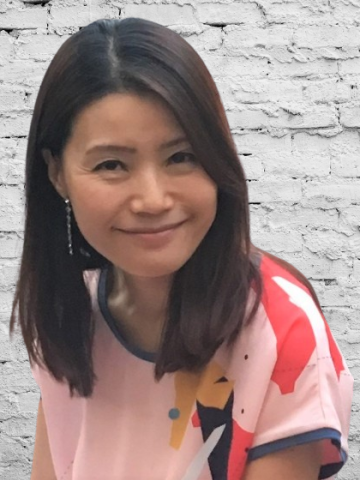
Minju Kim, Ph.D.
Department
Areas of Expertise
Education
B.A., M.A., Yonsei University; Ph.D., University of California, Los Angeles
Awards and Affiliations
The Korean Language in America (Journal of the American Association of Teachers of Korean)
Editor-in-Chief
Research and Publications
Book: Grammaticalization in Korean: the Evolution of the Existential Verb, Saffron Korean Linguistics Series 5, Saffron Books: London (2011).
"A Study of English-Speaking Korean Learners' Acquisition of the Postposition to 'also'," co-authored with Young-Hyun Nam, The Korean Language in America (Journal of the American Association of Teachers of Korean) (forthcoming)
"Development of the Korean Proximal Demonstrative into an Affective Stance Marker," Journal of Pragmatics 224 (2024), 1-19.
“Between Honorifics and Non-Honorifics: A Study of the Korean Semi-honorific Style and a Comparison with Japanese,” Discourse Studies 25:5 (2023), 664-691.
"Intersubjectivity, Stance, and Korean General Extenders," Journal of Pragmatics, 193 (2022), 253-268.
“Performing Gender in Korean: Language, Gender, and Social Change,” In John Whitman and Sungdai Cho (eds.), The Cambridge Handbook of Korean Linguistics, Cambridge: Cambridge University Press, (2022).
"The Story of Two Connectives: Korean tunci ‘or’ and kena ‘or’", Discourse Studies 23: 4 (2021), 497-518.
"Development of the Korean Connective ultheyntey into a Final Particle of Wishing and Worrying", Journal of Pragmatics 173 (2021), 51-65.
“From Connective Construction to Final Particle: The Emergence of the Korean Disapproval Marker hakonun,” Linguistics, 58:6 (2020), 1581–1607
"Korean General Extenders tunci ha and kena ha ‘or something’: Approximation, Hedging, and Pejorative Stance in Cross-linguistic Comparison,” Pragmatics, 30:4 (2020), 560-588
“From Connective to Final Particle: Korean tunci “or” and Cross-Linguistic Comparisons”, Journal of Pragmatics, 135 (2018), 24-38.
“Emergent Multiplicities of Self- and Other-Construction in Korean Workplace-Based Television Dramas” co-authored with Susan Strauss, Journal of Pragmatics, 137 (2018), 19-36.
“When topic meets ‘And’: Development of conditional and prohibitive constructions in Korean,” Discourse and Cognition, 25:1 (2018), 1-30.
“Women’s Talk, Mothers’ Work: Korean Mothers’ Address Terms, Solidarity, and Power,” Discourse Studies, 17:5 (2015), 551-582.
“From Choice to Counter-Expectation: Semantic-Pragmatic Connections of the Korean Disjunctive, Concessive, and Scalar Focus Particle -na,” Journal of Pragmatics, 80 (2015), 1-21.
“The Historical Development of the Korean Suffix –key,” In H. Sohn, H. Cook, W. O’Grady, L. Serafim, and S. Cheon (eds.), Japanese Korean Linguistics, 19 (2011). 435-448. Center for the Study of Language and Information/ Stanford University.
“On the Two Korean Sequential Connectives -kose and –konase,” In R. Fouser (ed.), Contemporary Korean Linguistics: International Perspectives, Seoul: Taehaksa (2010), 149-170.
“The Historical Development of Korean siph- "To Think" into Markers of Desire, Inference, and Similarity,” Journal of Pragmatics, 42:4 (2010), 1000-1016.
“hankwuke sisang kwumwunuy mwunpephwa [The Grammaticalization of Korean Tense-aspect Markers],” In S. Chung and C. Lee (eds.), Hankwuke yenkwuuy sayciphyeng [New Horizon of Korean Linguistics], Seoul: Taehaksa (2010), 151-184.
“The Intersection of the Perfective and Imperfective Domains: A Corpus-Based Study of the Grammaticalization of Korean Aspectual Markers,” Studies in Language, 33:1 (2009), 175-214.
“On the Semantic Derogation of Terms for Women in Korean, with Parallel Developments in Chinese and Japanese,” Korean Studies, University of Hawaii Press, 32 (2008), 148-176.
“A Corpus-based Study of the Grammaticalization of ‘Take’ in Korean: Focusing on the Developmental Paths into Instrumental, Sequential, and Causal Functions,” Korean Journal of Linguistics, 33:3 (2008), 387-420.
“The Emergence of the Korean Modal -keyss-: From Causative to Epistemic and Volitive Modal,” Discourse and Cognition, 15:2 (2008), 1-27.
“The Diachronic Development of the Korean Existential Verb iss-,” Korean Linguistics, 14 (2008), 91-111.
“A Corpus-based Study of the Grammaticalization of the Korean Connectives mye and myense: From Simultaneous to Quotative to Hearsay Evidential,” In M. Hudson, P. Sells, and S. Jun (eds.), Japanese Korean Linguistics, 13 (2008), 335-345, Center for the Study of Language and Information/ Stanford University.
“Cross-Adaptation of Language between Different Genders: The Case of Korean Kinship Terms Hyeng and Enni,” In S. Wertheim, A. Bailey, and M. Corston-Oliver (eds.), Engendering Communication: Proceedings of the Fifth Berkeley Women and Language Conference (1999), 271-283, Berkeley Women and Language Group/ University of California, Berkeley.
